Remarkable unanimity reigns among the dozen carrier and brokerexecutives offering their assessment of current conditions in thecommercial-lines market.
|Prices are clearly upward bound, with Workers' Comp leading theway, followed by Commercial Property (especially in cat-proneareas). But new business is still being priced at lower rates thanrenewals.
|Where are the opportunities in a highly mature U.S. market witha slowly recovering economy? Cyber is universally seen as an areaof expanding exposures, with Environmental, Green Energy andAgriculture coverages also expected to help grow premiums.
|And underwriters, thanks to ever-more-powerful data systems,certainly feel they are becoming more adept at differentiatingamong risk profiles, with this insight reflected in noticeablyvarying rates, deductibles, and terms and conditions among clientswith exposures that share surface similarities (see DigitalExtra).
|What is keeping people up at night? The “new normal” in extremeweather, fracking, opioid prescriptions and low interest rates topthe list.
||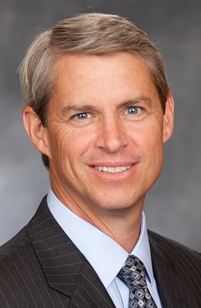 Jack Roche | President, Business Insurance atThe Hanover
Jack Roche | President, Business Insurance atThe Hanover
The commercial lines market continues to be a very dynamicone—with pricing and underwriting discipline improving for specificproduct lines, classes of business, and geographicmarkets. There is quite a variance in carrier behaviors basedon their respective geographic concentrations and profitability,and agents (even the best ones) are working harder than ever toaddress some of the pricing volatility and lack of predictableoutcomes emerging from the “more sophisticated” pricingmodels.
|Given the slow and sporadic pace of the economic recovery andthe continued difficult weather patterns, we do not see marketconditions changing dramatically any time soon. Theuncertainty of future loss trends and weak investment returns willbe a challenge for many over the foreseeable future.
|Agents and carriers who have a value-driven strategy, along withthe commitment and ability to differentiate themselves and sellvalue, are achieving significantly greater growth than those who donot.
|We continue to see tremendous growth in our small commercial(less than $50,000) business as well as solid growth of our middlemarket industry specific portfolio, and in our specialtybusinesses, such as marine and management liability.
|Overall portfolio management of risk is increasingly important.Those who focus solely on individual risks can find themselvesimpacted by larger loss trends.
|Many of “black box” models, which are built based upon historicloss patterns, are not functioning rationally given the dynamicnature of the current market. This creates additional uncertaintywith agents and customers, causing new shopping behaviors andultimately puts significant strain on agency economics as accountexecs and CSRs try to respond to the new level of pricingvolatility.
|In response, we see winning agents being much more selectiveabout the carriers with which they partner.
||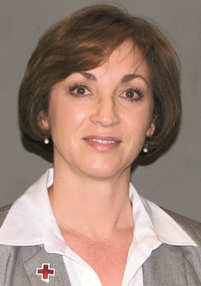 Karen Mildenhall | Regional ManagingDirector, Aon Risk Solutions
Karen Mildenhall | Regional ManagingDirector, Aon Risk Solutions
We are seeing rate increases in P&C commercial pricing todifferent degrees, across most product lines. The brokereffectively knowing the client's risk profile and communicatingthis to the underwriter will help keep rate increases to a minimum.Workers' Compensation and Property Catastrophe exposures are seeingthe most rate-firming. Capacity and coverage options remainstrong.
|Network Security/Cyber Liability is a growing risk. The increasein the number of cyber users, the increased amount of data beingtransferred, the emergence of new technologies, formal SECdisclosure guidance, the cloud and consistent mediacoverage have all only heightened attention from hackers andcybercriminals.
|Just-in-time supply systems are more vulnerable than ever due tothe expanding nature of business. At some point, an organizationwill have a supplier that has an unexpected disruption fromcontamination, natural disaster or other significant incident thatshuts off supplies critical to that organization.
|It will also be interesting to see the impact, if any, that theAccountable Care Act (ACA) has on Workers' Comp losses.Organizations without strong benefits programs in place have atendency to see cost shifting to Workers' Comp. With the ACAmandates holding, employers with longer waiting periods or minimalcoverage may see a shift in Workers' Comp soft-tissue injuries.
|Various market pressures will continue to result in overallmarket-firming. Given the state of the financial markets overalland less reserve redundancy, underwriters are looking to underwriteto [under] 100 combined loss ratios. When financial markets givebetter investment yields, investment income and reserves tend toshore up the confidence underwriters have in offering moreaggressive pricing.
| 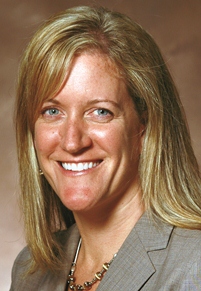 Tracy Ryan | Chief Product Officer, LibertyMutual
Tracy Ryan | Chief Product Officer, LibertyMutual
Currently, the commercial-lines market is firming, particularlyfor the Workers' Compensation and Commercial Property lines. Otherlines are seeing positive but slower rate increases.
|The market's overall firming is driven by a number of factors:underwriting losses from catastrophe claims in 2011; an activestorm season in the first quarter of 2012; and a historically lowinterest-rate environment—all of which significantly impactinsurers' investment returns and overall profitability.
|The economic recovery has been modest at best, and in someindustry sectors, it has been virtually nonexistent. But onegrowing area is the Residual market, which expanded in 2011 for thefirst time since 2004. Growth has continued in 2012, with premiumsestimated to be up close to 50 percent over 2011.
|The increase in the number and frequency of severe tornadoes andhailstorms across the country in the last year—outside the areatypically thought to be “Tornado Alley”—has focused the industry onbetter understanding its exposure and ensuring that we have theright risk management and pricing in place for these events.
|The other emerging risk is legislative. The Terrorism RiskInsurance Act is slated for expiration in December of 2014. This iscertainly a big issue for the insurance industry, and something wewill be watching closely.
| 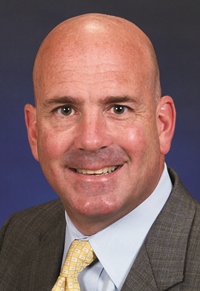 Daniel Gaynor | Vice President, CommercialLines, Main Street America Group
Daniel Gaynor | Vice President, CommercialLines, Main Street America Group
I would characterize the current market condition as an“underwriting marketplace,” meaning underwriters are looking atrisks closely and underwriting them based on line of coverage,experience and how their book of business has performed.
|The segments where we are experiencing the greatest growth thisyear include office and service-market segments. Our Main LineBusiness Owners Policy (BOP) is also enabling us to round out ourcommercial-lines book with artisan contractors. We also recentlylaunched a tiered Commercial Auto product that is being rolled outto all of our states.
|Automation is playing a key role in driving profitable growth.For example, our independent-agent distribution force uses our MainStreet Station commercial-lines processing system for quoting,binding and issuing policies right at their desktops. Aneasy-to-use policy-processing system is table stakes in today'smarket.
|Another trend we are experiencing is bundling products. Webundle our Main Line BOP with Employment Practices Liabilityinsurance, Employee Benefits and ID-theft coverage. The moresophisticated buyer of insurance is looking for these types ofpackages. The true winners in the marketplace are going to be thosecarriers that can respond to the needs of their insureds.
|Emerging [coverage opportunities] in the market include HealthCare, Energy and Green Technology. The insurance industry needs toreact more quickly to the environment and keep up with changes,especially in the area of technology.
|Extreme weather events are high on the emerging risks scale forcarriers. In more recent years, we are seeing extreme weatherevents across the United States and around the world. Insurers needto assess if this is the “new norm” or if it is just cyclical.
|We are clearly experiencing firming in our renewal pricing, butwe don't expect to see a hard market in the foreseeable future.
| 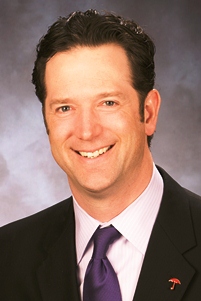 Michael Klein | President of Middle Market,Travelers
Michael Klein | President of Middle Market,Travelers
The combination of low interest rates and extreme-weather eventscontinues to put pressure on margins. In terms of growth, it's nosecret that the economic recovery in the U.S. has beenslow and inconsistent. This translates directly to slow and unevengrowth in the industries and exposures we insure.
|Due to the economic backdrop, controlling costs is a criticalconcern for our insureds. We are seeing an increased demand for ourindustry-focused claim- and risk-control services as [clients] seekto better manage their total cost of risk.
|Property losses from catastrophe events have been, and continueto be, a significant concern across the industry. As a result,we've seen an increased focus on proper insurance to value (ITV) toensure that property owners have sufficient coverage in the eventof a loss.
|In commercial lines, we continue to achieve improved pricing andfeel good about the retention levels we're achieving. We believethat we differentiate ourselves from many in the marketplace by nottaking a one-size-fits-all approach to pricing.
|  Randy Schreitmueller | VP/Manager, GlobalServices & Market Relationships, FM Global
Randy Schreitmueller | VP/Manager, GlobalServices & Market Relationships, FM Global
Generally speaking, the global market is firming. In the U.S.,rates are heading north. Yet there is still plenty of capitalin play, so there's no major sea change until something changesthat balance.
|On average, the U.S. market is supporting low- tomid-single-digit increases in rates, but that is very much drivenon an account-by-account basis. Accounts with poor risk quality,adverse loss experience and significant catastrophe exposures couldbe seeing significantly higher rate increases.
|As the global economy continues to develop, much of the growthis occurring outside North America. For example, multinationalscomprise a 75-percent-and-growing share of FM Global clients.Interestingly, the globalization trend is no longer the exclusiveprovince of large multinationals. It seems to be trickling down toinclude midsize businesses.
|With more growth outside North America, many multinationals areincreasingly interested in insurers' network scope andresponsiveness, as well as their ability to provide consistentcapacity, coverage and services (e.g. engineering and claims) whilemaintaining compliance and on-the-ground expertise.
|There are four increasing risks we're seeing. Those risks stemfrom growing supply chains; company acquisitions and the need toprotect newly acquired key facilities in new markets; variabilityof codes and standards from country to country; and there-emergence of protectionist regulation.
| 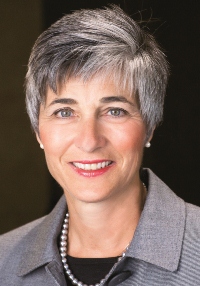
Elizabeth Dinnin |President, Commercial Lines, Grange Insurance
|While the market has been in a state of flux the last severalquarters, the key word this year is “firming,” which will helpmaintain profitability. In catastrophe-prone areas, we are seeingdouble-digit property-rate increases on a consistent basis. GeneralLiability and Commercial Auto pricing is up over previous years aswell. Workers' Compensation prices are clearly on the rise and varyby geography, class of business, loss experience and exposure.
|Despite these rate increases, however, we haven't enteredhard-market territory.
|Stronger renewal pricing is contributing to growth and appearsto be firming, with the Property and Workers' Compensation linesseeing the most significant adjustments. Property-intensive risksare being closely scrutinized as the industry-profit results forcommercial continue to be under pressure. In addition, carriers aretaking a more aggressive stance on property deductibles, ratelevels, eligibility, underwriting, acceptability, and overall termsand conditions as risk is managed more closely.
|New business is still actively being pursued by commercialcarriers, and while a bit more hit-or-miss, there seems to be amplecapacity for clean, above-average risks. While not atypical in atransitioning market, there appears to be a fairly sizable gapbetween new and renewal pricing. As the market continues to firm,we would expect that gap to narrow.
|Fracking continues to be an issue as there is concern aboutwhether or not this process triggers earthquakes. In addition,other likely types of [fracking] exposures are Pollution, GeneralLiability, and Workers' Compensation, as well as Extra Expense anddamage to service equipment.
| 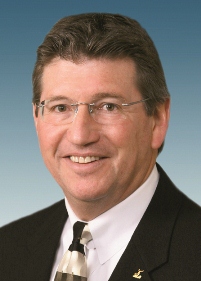
Gary Thompson | Executive VP, Middle MarketCommercial, The Hartford
|Low investment yields, medical-cost inflation, severity trendsand the impact of large catastrophic losses on combined ratios arecausing continued upward pressure on [rates]. Thepricing trends that moved from negative to positive in late2011 continue. In general, carriers are taking pricing andunderwriting actions on multiple lines, with the heaviest focus onWorkers' Compensation, where combined ratios are showing the moststrain.
|Capacity for Commercial Property remains available forbest-in-class businesses. Businesses in tornado-exposed areas areseeing stronger Property pricing increases and deductibleterms.
|For national accounts, I would characterize the market as firmrather than hard, with clients seeing mid- to high-single-digitincreases to offset loss-cost and interest-rate pressures. Forthese larger accounts, the primary growth area right now is inbundled programs. The unbundled marketplace is still verycompetitive, with a lot of capacity with both established carriersand newer entrants.
|While there are a number of emerging risks, one of the mostimmediate is Social Media Liability, fueled by the increased use ofsocial media by businesses of all sizes. This has given rise tovarious potential exposures, including personal injury (libel,slander and defamation), as well as intellectual-property rights,given the ease with which information can be obtained, copied anddisseminated.
| 
Kevin Brogan | Managing Directorand National Practice Leader, Wells Fargo Insurance ServicesInc.
|Workers' Compensation is a challenging line of business for theindustry, and we are seeing those challenges reflected in themarketplace. Carriers are watching the Workers' Compensationline closely as most carriers are looking for price increases,changes in structure or (on a limited basis) nonrenewals. Dependingon the state mix and program, some pricing increases are largerthan others.
|We have seen two areas of growth this year in thecommercial marketplace, both coinciding with our economy:Owner-Controlled Programs and Environmental Programs have takenoff. When we look at past years versus our results in 2012 we haveseen many more opportunities and successes, partly due to theeconomy and partly due to our increased focus on these productlines.
|We are seeing an increase in discussions surrounding network andprivacy risk. It's not a matter of if, but when a company willbe faced with a breach event, regardless of size or industryclass. We spend a significant amount of time consulting withour clients on best practices and, ultimately, how to transfer riskin the event a breach occurs.
|Liability and Property Lines are seeing flat to slightlyincreased renewals based on their exposures and losses.
| 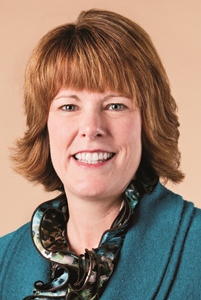
Martha Oakes | National Middle MarketLeader, Westfield Insurance
|We view the commercial-lines market as relatively stable rightnow. Customers with good experience are focused on their business,less interested in shopping their insurance, and inclined to staywith their current carrier and agent.
|Unfortunately, many companies that were most impacted by thefinancial crisis in 2008-2010 are no longer in business. On apositive note, those that have survived are mostly stable andstarting to see some signs of improvement.
|Overall, exposure growth is still only moderate, but thesegments seeing the most growth are Agriculture, Health, Technologyand some Manufacturing.
|So far, we have seen firming in pricing, especially in theWorkers' Comp and Property lines. Property is firming more quicklyin areas that have been impacted by storms the last two years.
| 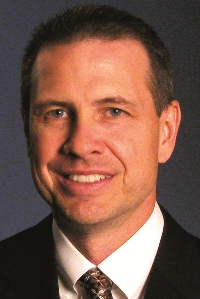
Mike Halvey | Head of Middle MarketCommercial, Zurich North America
|While industry results in 2012 will likely mark the thirdconsecutive year of plus-100 combined ratios, we are clearly seeinga more favorable pricing environment and increased demand for somecommercial products. There also is an increasing understanding ofpotential Cyber risks that come from data transfer/storage, socialmedia, etc., driving increased demand for this product.
|Despite adequate capacity, the industry is clearly achievingpositive rate.
|Key drivers include significant deterioration in investmentresults—historically responsible for some 90 percent of insurerprofits—and the cumulative impact of negative rate over the pastmany years.
|Workers' Compensation is a particularly challenged line andconsequently is leading the rate gain. We are also seeing many inthe industry achieve rate in excess of the loss trend, yielding anet-positive result.
| 
Douglas R. Pearson | Vice President,Commercial Product and Pricing, Nationwide
|The commercial-lines market is dynamic in that there is a widerange of underwriting actions impacting the current market.Carriers are culling their books and ridding themselves ofunderperforming segments of business.
|With the continued refinement of pricing, risk segmentation andrisk modeling, the commercial market is firming in a more segmentedfashion than previous market cycles. Various lines of business arefirming at a faster rate than others.
|Those carriers that have a robust value proposition rooted insound risk selection, expertise, customization and goodrelationships with their distribution partners will continue to seeprofitable growth. As rates firm, customers are evaluating thevalue and expertise that are delivered, creating opportunities forwellpositioned carriers.
|Relative to customer protection, the risk of data breach isbecoming a raised awareness among insureds; [as a result] there hasbeen a lot of activity in Cyber Liability.
|Pricing is up in total. Workers' Compensation and CommercialProperty rates are trending up. Some other segments, such asConstruction risks, are under pressure as well. Pricing increasesare very selective based upon individual risk characteristics. Withthe onset of predictive modeling, accounts with unfavorable riskcharacteristics are seeing steeper price increases and an increasein underwriting activity than average or above-averagerisks.
||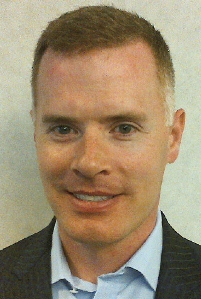 Dan McGinnis | Division Executive, U.S. andCanada, Small to Midsize Enterprises, Chartis
Dan McGinnis | Division Executive, U.S. andCanada, Small to Midsize Enterprises, Chartis
The commercial-lines market is moving in the right directionfrom the perspective of discipline—both pricing discipline andrisk-selection discipline. But the market still needs todemonstrate more consistency in this regard. Real growth, at leastin a mature market like North America, will be found in newproducts that cover new risks.
|Although not quite new anymore, a recognizable example of thenew product/new risk nexus is Cyber exposure. Customers arelearning in real time about their Cyber exposures and through thatprocess are arriving at an insurance value for those exposures. Thecommercial-lines market needs to partner with these customers tounderstand this value proposition. Through this partnership willemerge a robust new market.
|Want to continue reading?
Become a Free PropertyCasualty360 Digital Reader
Your access to unlimited PropertyCasualty360 content isn’t changing.
Once you are an ALM digital member, you’ll receive:
- All PropertyCasualty360.com news coverage, best practices, and in-depth analysis.
- Educational webcasts, resources from industry leaders, and informative newsletters.
- Other award-winning websites including BenefitsPRO.com and ThinkAdvisor.com.
Already have an account? Sign In
© 2024 ALM Global, LLC, All Rights Reserved. Request academic re-use from www.copyright.com. All other uses, submit a request to [email protected]. For more information visit Asset & Logo Licensing.








